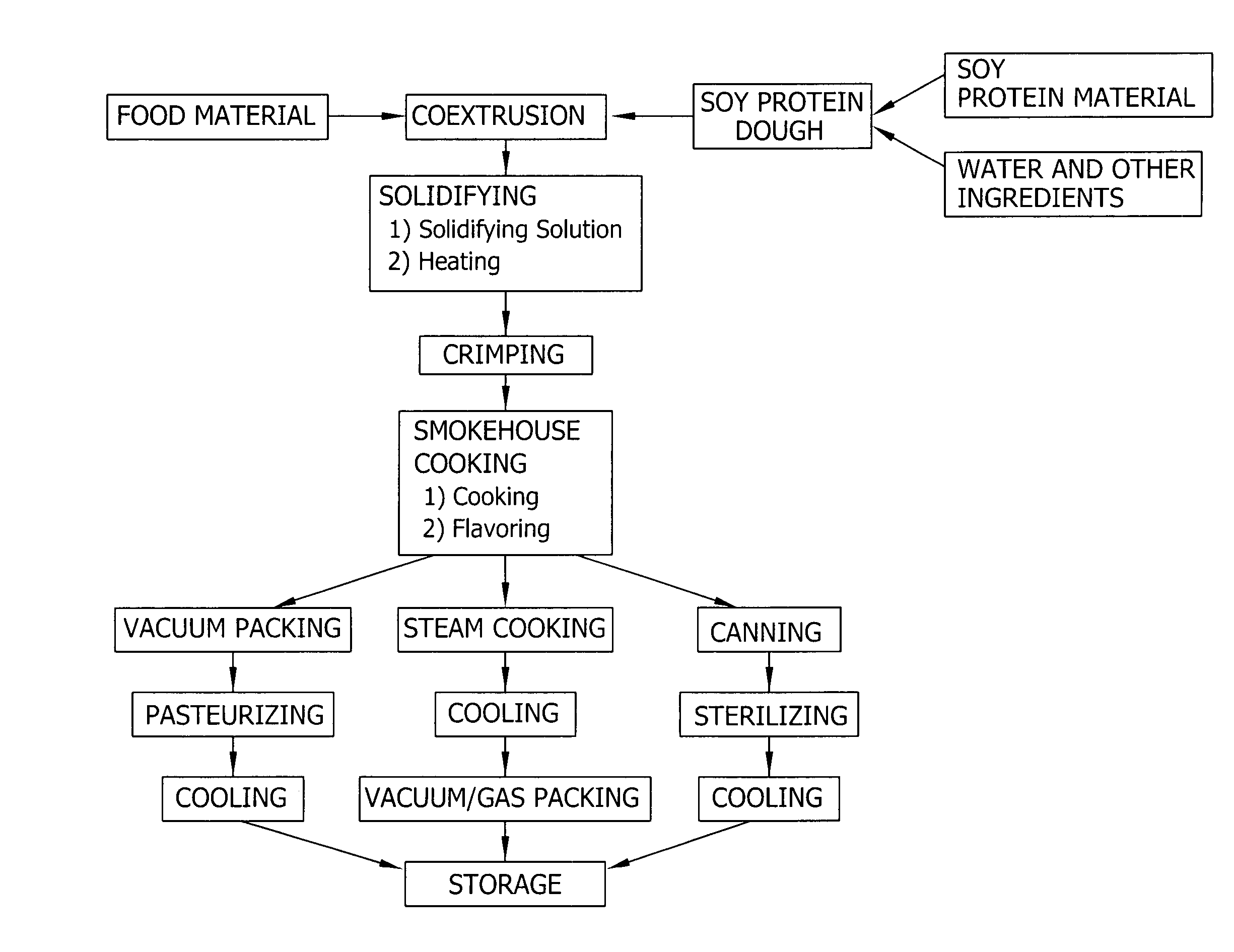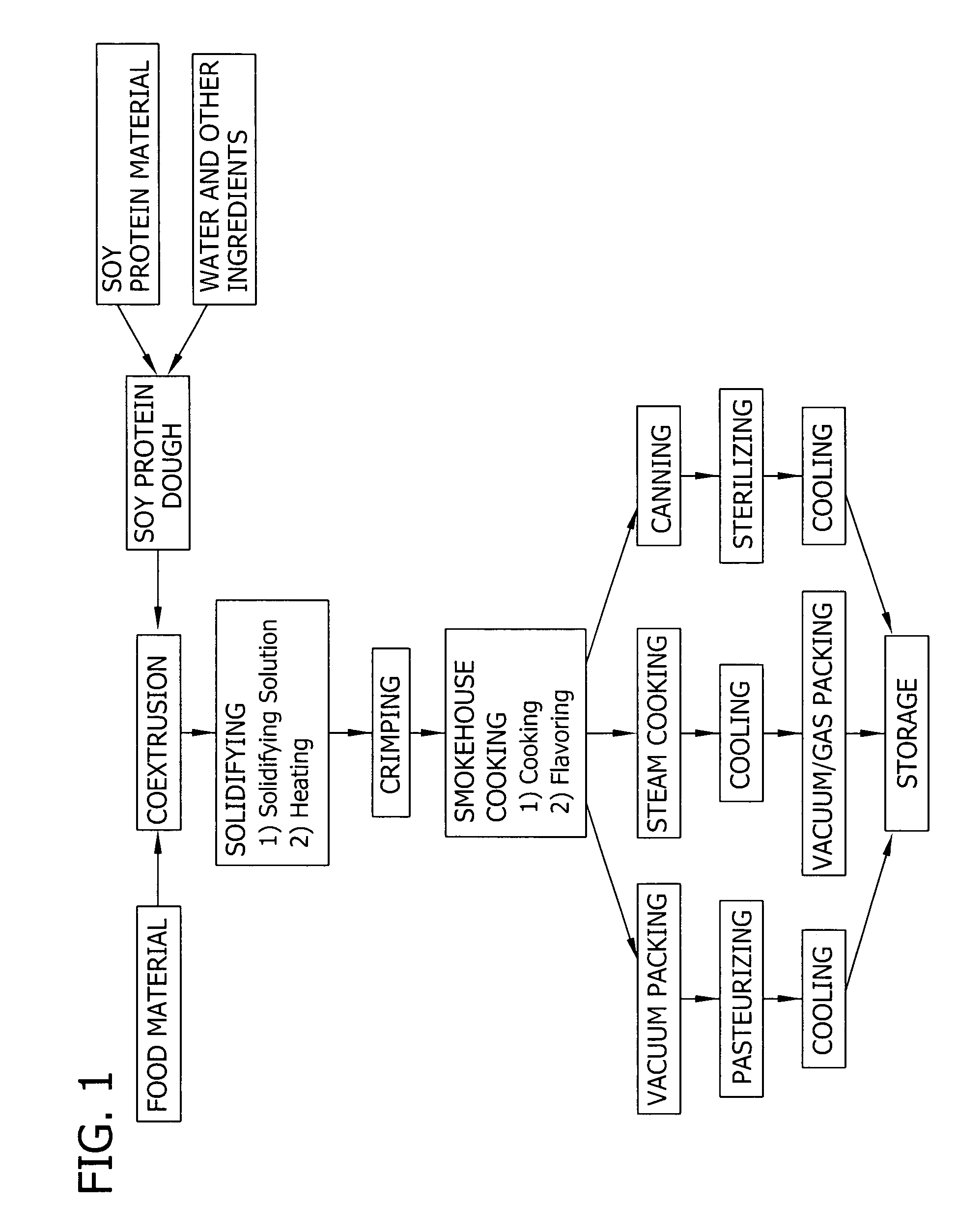Encased food product and process for producing the same
- Summary
- Abstract
- Description
- Claims
- Application Information
AI Technical Summary
Benefits of technology
Problems solved by technology
Method used
Image
Examples
example 1
[0064] In this Example, a soy protein dough in accordance with the present invention is formed. 16.5 grams of glycerol (available from KIC Chemicals, Armonk, N.Y.), 5.5 grams of soybean oil (available from Bunge North America, St. Louis, Mo.), 2.75 grams of lecithin (CentroPhase 152, available from The Solae Company, St. Louis, Mo.), and 1.0 grams of sodium carbonate are introduced to 389.88 grams of water. This mixture is blended for approximately 5 minutes to dissolve the sodium carbonate powder. To this mixture, 82.5 grams of a soy protein isolate (SUPRO® 595, available from The Solae Company, St. Louis, Mo.) and 1.87 grams of alginate (available from TIC Gums, Inc., Belcamp, Md.) are added. The resulting mixture is blended under high shear for about 2 minutes at about 3400 RPM at room temperature until substantially no lumps are present to form a soy protein dough including 16.5% (by weight) soy protein isolate. The pH of the soy protein dough is about 7-8, and the soy protein d...
example 2
[0065] In this Example, the soy protein dough formed according to the method of Example 1 is coextruded with a food material to produce an encased food product. Also, two collagen-encased food products are formed for comparison to the soy protein encased product.
[0066] First, a coextruder is formed by inserting one hand-operated extruder (i.e., the meat extruder) into a second hand-operated extruder (i.e., the casing material extruder). The gap between the meat extruder and the casing material extruder allows the passage of the casing material. As the meat and the casing material are separately extruded from their respective extruders, the casing material is deposited on the outer surface of the meat, as by coextrusion.
[0067] The soy protein-coated food product is produced using the above coextruder. The food material is a sausage, and the coextruder coats the sausage with a 200-300 μm layer of the soy protein dough formed according to the process described in Example 1. Following...
PUM
 Login to View More
Login to View More Abstract
Description
Claims
Application Information
 Login to View More
Login to View More - R&D
- Intellectual Property
- Life Sciences
- Materials
- Tech Scout
- Unparalleled Data Quality
- Higher Quality Content
- 60% Fewer Hallucinations
Browse by: Latest US Patents, China's latest patents, Technical Efficacy Thesaurus, Application Domain, Technology Topic, Popular Technical Reports.
© 2025 PatSnap. All rights reserved.Legal|Privacy policy|Modern Slavery Act Transparency Statement|Sitemap|About US| Contact US: help@patsnap.com


